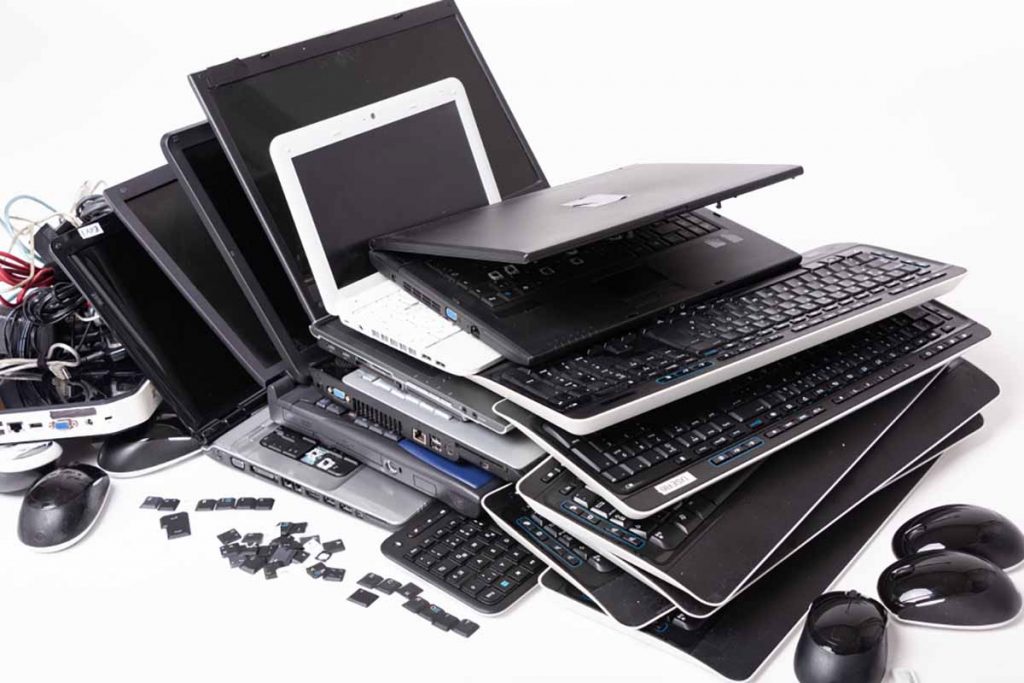
The Illinois Consumer Electronics Recycling Act has a March 1 deadline for participation in the 2026 program year. | Penofoto/Shutterstock
With the approach of the annual March 1 deadline to opt into the 2026 Illinois Consumer Electronics Recycling Act, state and national organizers held an information session and provided an update on amendments to CERA legislation.
During the Feb. 10 virtual workshop, presented by the Illinois Recycling Foundation, several recycling firms who participate in CERA also shared best practices.
To enable annual planning, CERA sets a March 1 deadline to opt in for the following calendar year, said Archana Uppuluri, electronic waste coordinator at the Illinois Environmental Protection Agency.
In the program, manufacturers collect used electronics and help fund recycling for covered devices. To opt in, they must submit a registration form and fee to the Illinois Manufacturer Clearinghouse or the state EPA CERA site, then turn in an e-scrap program plan. Manufacturers also pay for packaging materials, including pallets and stretch film, and provide transportation for the collected items, she said.
Key components of a program plan include the proposed number and location of collection sites or events, preference for recycler or group plan, and estimated pounds to be collected, said Jason Linnell, executive director of the National Center for Electronics Recycling, which administers the Illinois Manufacturer Clearinghouse.
Recyclers also submit a registration form and fee and are responsible for engaging with their assigned counties to coordinate logistics for collection sites. Participating local governments submit an opt-in form and are responsible for selecting and advertising recycling events and sites, and providing labor and equipment for electronics collection.
The state agency reviews and approves manufacturer program plans, enforces CERA requirements, coordinates the county opt-in and manufacturer or recycler registration processes, and posts collection information online.
Between 55 and 60 out of 102 Illinois counties participate in the program, and about 88% of the state population has access to a CERA site or event, said Uppuluri. The program collected 14.7 million pounds of electronics in 2019, its inaugural year, but in 2023 that total was 9.94 million, due to increasingly lightweight electronics components. As a result, the program shifted its focus on increasing access to e-scrap programs rather than meeting a weight goal.
CERA legislative update
The bill that established CERA is set to expire at the end of 2026, but stakeholders are working to advance legislation that would continue and further improve the program.
Christina Seibert, chair of the Illinois Electronics Recycling Task Force and executive director of the Solid Waste Agency of Northern Cook County described an amendment her group hopes is passed in this year’s legislative session.
After discussions with stakeholders, the group determined goals for the amendment, including increasing county participation in CERA, sustaining private network collections, adapting to a changing stream of used electronics, expanding access to manufacturer-funded recycling and improving consumer awareness of proper management of unwanted electronics, Seibert said.
Identical bills have been filed in the Illinois House and Senate, she said, and will later have committees assigned and hearings scheduled. If the amendment is passed this spring, the group expects the governor to sign it by the end of summer, Seibert said. Program changes would then be effective for the 2027 program year, for which planning will begin in March 2026.
Since its implementation in 2019, CERA has governed electronics recycling in Illinois and covers 17 residential devices in eight categories:
- Computers and small-scale servers.
- Computer monitors.
- Televisions.
- Printers, fax machines and scanners.
- DVD players and recorders, and videocassette recorders.
- Video game consoles.
- Digital converter boxes, cable receivers and satellite receivers.
- Electronic keyboards and mice, and portable digital music players.

